On October 19th General Jubal Early’s Confederates launched a predawn attack here at Cedar Creek and drove Union troops out of their lines and through Middletown in disarray. Union General Philip Sheridan, however, rallied his troops and turned the Confederate victory into a total defeat.
-
Cedar Creek & Belle Grove National Historical Park
Article 1: Eve of Battle
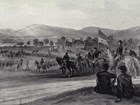
On the night of October 18, 1864, tents sheltering part of General Philip Sheridan’s 32,000 strong Union Army of the Shenandoah blanketed the fields of Belle Grove. Read more
-
Cedar Creek & Belle Grove National Historical Park
Article 2: Long Meadow Crossing
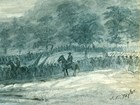
Two Confederate divisions crossed the North Fork of the Shenandoah and marched along the road, passing Long Meadow. Read more
-
Cedar Creek & Belle Grove National Historical Park
Article 3: Silent March
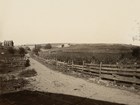
After fording Cedar Creek, approximately 3,000 Confederates marched with a rising fog obscuring their movements. Read more
-
Cedar Creek & Belle Grove National Historical Park
Article 4: Surprise Attack
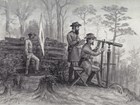
After a silent all-night march along the base of the Massanutten, the Confederates forded the creek and river and, aided by a dense fog, stormed this hill, catching many of the Union soldiers unaware, some still sleeping in their tents. Read more
-
Cedar Creek & Belle Grove National Historical Park
Article 5: Bearing the Brunt
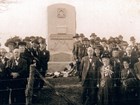
The 128th New York Regiment bore the brunt of the Confederate attack against their position. In the fog and smoke they could see little-- only the flash of rifles and sounds of battle told them where the enemy was. Read more
-
Cedar Creek & Belle Grove National Historical Park
Article 6: Stand of the Eighth Vermont
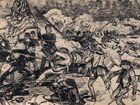
In a desperate attempt to stem the onward rush of Confederates, Col. Stephen Thomas was ordered to sacrifice his 1,000 soldiers from Vermont, New York, Connecticut, and Pennsylvania. The fight that followed was a “vortex of hell,” one veteran later claimed. Read more
-
Cedar Creek & Belle Grove National Historical Park
Article 7: A Rich Prize
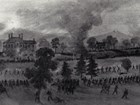
Belle Grove was Union headquarters, and thus was surrounded by hundreds of supply wagons, ambulances, and tents. As the Confederate advance neared the plantation manor house there was a scramble to evacuate them to safety. Read more
-
Cedar Creek & Belle Grove National Historical Park
Article 8: Defense in the Cemetery
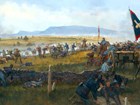
The Middletown Cemetery, on a knoll west of the village, was the only point where Union officers believed they could establish a strong position and attempt to slow the Confederate advance. Read more
-
Cedar Creek & Belle Grove National Historical Park
Article 9: The Fatal Halt
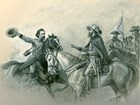
General John Gordon and his commanding officer, General Jubal Early, met to assess the situation. Gordon urged continuing the pursuit. Early believed that the battle had been won. Read more
-
Cedar Creek & Belle Grove National Historical Park
Article 10: Sheridan Arrives
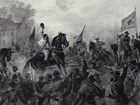
General Philip Sheridan arrived on the battlefield following his famous and dramatic ride from his headquarters in Winchester. Read more
-
Cedar Creek & Belle Grove National Historical Park
Article 11: Union Counterattack
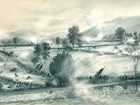
Sheridan’s reformed battle lines stretched for almost two miles from east to west. Their counterattack took them back over the fields that they had earlier fled. Read more
